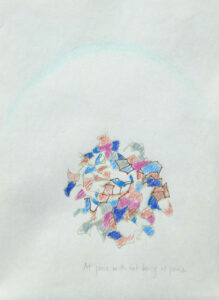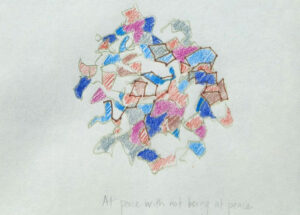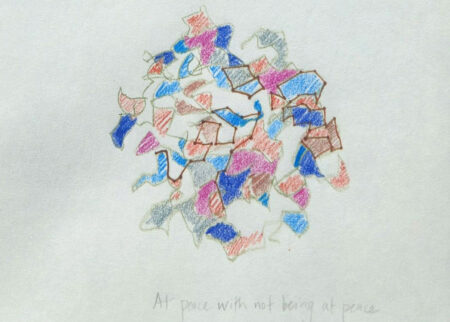Forget what you think you know, forgive, and love.
A friend of ours, Mark, dropped this little philosophical morsel into a conversation the other day. We’ve been chewing on it since. Although it seems to be so simple, there was something so profound and true to it. However, those three things are probably the most challenging calls to action ever laid down. And even if you wanted, how do you even do it?!
Pivot to Annu
We answer this with another friend Annu, featured here before partly because she has been willing to be the subject of our newsletters, but also because she so perfectly illustrates how you can use art to transmute our default modes of being and seeing, the dominance of the negativity bias, and the tendency to be stuck in our perceptions of things even when we desperately want to perceive them differently.
Caught in Her Judgements
The other day, Annu was frustrated with herself that, despite all of the work that she does trying to quiet her mind and her judgments—about others, herself, and the world—she doesn’t experience more internal peace. “My judging mind and thoughts are like a radio that is constantly blasting in my head.”

Art to Dislodge the Angst
Annu decided to pull out some art supplies to dislodge this angst, thinking all the while, “What if I could be at peace with not being at peace?” She drew a series of what she described as an “angular string of knots” to capture the chattering judgments tying up her mind. She then added an arching blue line at the top of the page, explaining that it represented the fact that “You can’t get out of the chaos unless you go up to the blue arc in the sky, a place of not trying, of unconditional allowing, surrender and forgiveness.”
Being at Peace with Not Being at Peace
She felt like the drawing did a nice job of capturing the paradox that “I can be at peace with whatever is happening and what’s happening is that I am not at Peace.”
What the Image Was Versus What Annu Intended
Later, when she showed Rebecca her drawing, Annu spoke at length about the blue arc which she said represented a place of “radiance and acceptance–a place of non-judgmental awareness and love”.


Rebecca observed that, although Annu was describing the arc as if it were pronounced and luminous, it was actually very faint. In fact, the center seemed to be the most vibrant. It was where the eye seemed to be drawn. And, because this area has colorful shapes that seem to fit together and a design of connecting geometric lines, it did indeed suggest energy but not necessarily chaos.
What That Difference Meant to Her
As we explored what this might mean, it dawned on Annu that although she had been convinced that her mind was verifiably chaotic and that going to some other idealized place would bring her peace, the image revealed that her mind was not as turbulent as she believed. Suddenly, as is wont to happen, she saw the center area completely differently—she saw its vibrance, playfulness, and whimsy. She also felt a sudden shift in perspective, feeling like the blue arc was part of circular bubble in which she was floating looking and benignly down at the center.
She Forgot What She Thought She Knew, Forgave, and Loved Herself
In one of those moments that you can palpably feel, Annu recognized that she had truly “let go” of what she “thought she knew”—the conviction that her mind was chaos and that acceptance and peace meant getting out of it—and she experienced a simultaneous flash of forgiveness, acceptance, and deep peace.
We Need to Externalize Our Internal World To See It Differently
Because we are so frequently locked in our perceptions which then keep us in a cycle of angst and distress, it usually not enough just to want it to change, to want to be more less judgmental, more accepting, forgiving, relaxed, loving, etc. We need to disrupt “what we think we know” by externalizing and getting a new perspective on our beliefs. Then, as with Annu, we are no longer trying to force our minds to change, they just do and with that follows that acceptance, forgiveness, peace, and love that we are longing for.
Using Others to Help Us See
We should note that what is operating in this process occurs both in the making of the art and also the objective viewing of the art. You can try this on your own using the tools of visual language to objectively describe your imagery and see what metaphors emerge in that process. However, it really helps to have someone else do that with you, because they aren’t caught up in what was intended. This can really be anyone, but of course an art therapist is likely more skilled at this process. You are welcome to contact us if you ever want to explore that process.
